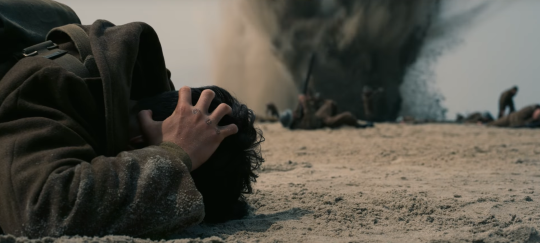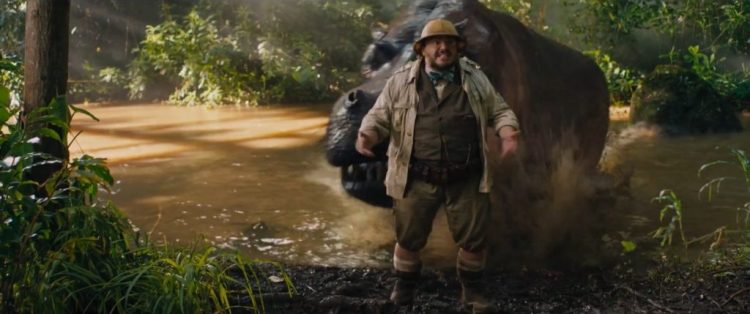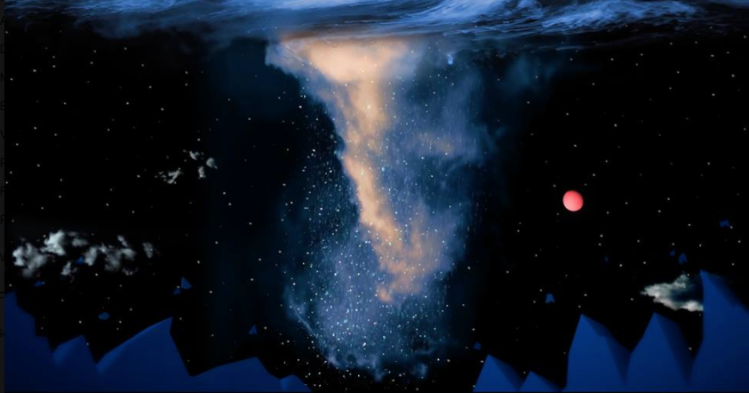
What’s good? This coming Tuesday, 23 January, the Academy of Motion Picture Arts & Sciences is going to announce their nominees for the Oscars in March and so like last time I’m back on that fun guessing game about what movies are getting nominated based on how the air felt this past year, soon to be followed by my trying to desperately catch up with these nominations by supplying any missing reviews. Here’s my guesses with minimal commentary.
Well, enough of that… let’s see how wrong I was and what a surprise the nominees were! Blue is what I guessed and red is what I guessed wrong (dashes mean they were not nominated, clear means I didn’t guess them)
BEST PICTURE
Call Me by Your Name
Darkest Hour
Dunkirk
Get Out
Lady Bird
Phantom Thread
The Post
The Shape of Water
Three Billboards Outside Ebbing, Missouri
Non-binding Prediction: The Shape of Water
My Pick: Phantom Thread
I only think there’s a chance in hell for these seven and NOTHING ELSE. Every one of them has snatched their own precursor awards except for the timely Spielberg Post and, well, Hollywood loves a political statement. Also, some dude challenged me to bet money that The Disaster Artist wasn’t gonna get a Best Picture nomination and then chickened out. Boy would it have been satisfying for him to take that bet he tried to propose.
Nine fucking nominees! I would have sooner guessed SIX nominees than nine, I didn’t think enthusiasm for 2017’s films was that high. And I especially would not have guessed Phantom Thread would suddenly swoop in to steal a slot. Ah, it feels good to have a movie on my top ten show up in the slate (and from one of my former nemeses of cinema). Still would have liked Mudbound to show up but hey!
BEST DIRECTOR
Paul Thomas Anderson – Phantom Thread
Guillermo Del Toro – The Shape of Water
Greta Gerwig – Lady Bird
Martin McDonagh – Three Billboards Outside Ebbing, Missouri
Christopher Nolan – Dunkirk
Jordan Peele – Get Out
Prediction: Guillermo Del Toro
My Pick: Paul Thomas Anderson
DGA seems to get it right, although I could see Gerwig being ousted for somebody else (either Paul Thomas Anderson or Steven Spielberg).
Well, there we are again. McDonagh is pushed out by Phantom Thread sudden clout and it feels soooooooo good to have that happen. I’m not entirely with the nominations of Del Toro or Gerwig, but at least we have people of color and women in the slate. I’m just saying… could have been Dee Rees if Oscars didn’t suck.
In any case, this is still a fine slate and I think with McDonagh’s shove, The Shape of Water is clear to take the gold away (though I would not say that Three Billboards is completely out for the count if we consider Argo‘s past win without Director nomination).
BEST ACTRESS
Sally Hawkins – The Shape of Water
Frances McDormand – Three Billboards Outside Ebbing, Missouri
Margot Robbie – I, Tonya
Saoirse Ronan – Lady Bird
Meryl Streep – The Post
Prediction: Frances McDormand
My Pick: Frances McDormand
Pretty straightforward. Only possibly spoiler is Judi Dench taking over for Streep, but AMPAS is like… the biggest Streep fanclub in the world and The Post is her first great performance in a while.
Cool, I got all of them in a row.

BEST ACTOR
Timothée Chalamet – Call Me by Your Name
Daniel Day-Lewis – Phantom Thread
James Franco – The Disaster Artist
Daniel Kaluuya – Get Out
Gary Oldman – Darkest Hour
Denzel Washington – Roman J. Israel, Esq.
Prediction: Gary Oldman
My Pick: Daniel Day-Lewis (I have not seen Roman J. Israel, Esq. yet)
A month ago, I’d have called my hopes for Kaluuya’s nomination to be nothing but a pipe dream. Now with all of these accolades on his back, I’m excited. Head and shoulders above every nominee that’s not DDL.
Also, remember when I said some guy tried to bet me that The Disaster Artist would get a Best Picture nomination? That money would have come in handy now that I’m gonna owe a Mr. J.B. money after betting him that the movie would get NO nominations. And man, that performance is not a good ‘un.
Nah nah nahhhhh nah. Nah nah nahhhhhh nah. Hey heyyyyyyy, goodbye.
BEST SUPPORTING ACTRESS
Mary J. Blige – Mudbound
Hong Chau – Downsizing
Tiffany Haddish – Girls Trip
Allison Janney – I, Tonya
Lesley Manville – Phantom Thread
Laurie Metcalf – Lady Bird
Octavia Spencer – The Shape of Water
Prediction: Allison Janney
My Pick: Lesley Manville
I call to mind Melissa McCarthy’s sudden Oscar nomination for breaking out in Bridesmaids way back and see all the awards for Haddish and think to myself “Well, Hunter hasn’t been talked about in a long while unfortunately”.
I think any Mudbound nomination is on shaky ground, but if it can’t grab this, that’ll be the killing blow to any Netflix film’s Oscar chances until they change up their release plan.
Mudbound is running strong. Not strong enough to make me happy, but this nomination was the litmus test on whether or not Netflix finally broke through to the Academy and it’s not like there was a dearth of contenders here.
Anyway, Octavia Spencer deserves so much better and another pop up Phantom Thread nomination. Sorry, Holly, you should be here instead of Janney.
BEST SUPPORTING ACTOR
Willem Dafoe – The Florida Project
Woody Harrelson – Three Billboards Outside Ebbing, Missouri
Richard Jenkins – The Shape of Water
Christopher Plummer – All the Money in the World
Sam Rockwell – Three Billboards Outside Ebbing, Missouri
Michael Stuhlbarg – Call Me by Your Name
Prediction: Sam Rockwell
My Pick: Christopher Plummer
Frankly slim pickings, though Stuhlbarg has his “Big Awards Clip” moment and he excels at it (honestly any of his three appearances in a Best Picture contender have great moments… ok, maybe not The Post). There was also a bit of a kerfuffle in wondering which would get the coveted double nomination here – Harrelson/Rockwell, Stuhlbarg/Hammer, or with less likelihood Jenkins/Shannon. I think Billboards‘ continuous snatching of awards secures it here.
Call Me by Your Name got shut the fuck out, hot damn. Not a single nomination in this category. Plummer is an absolute fascination in his performance (one of only two reasons to watch All the Money in the World beyond morbid curiosity) and it’s a pleasant surprise to see him here, even at the cost of well deserving performances. The Three Billboards could have gone down and we know it.

BEST ORIGINAL SCREENPLAY
Guillermo Del Toro & Vanessa Taylor – The Shape of Water
Greta Gerwig – Lady Bird
Liz Hannah & Josh Singer – The Post
Martin McDonagh – Three Billboards Outside Ebbing, Missouri
Kumail Nanjiani & Emily V. Gordon – The Big Sick
Jordan Peele – Get Out
Prediction: Greta Gerwig
My Pick: Jordan Peele
Yeeesh. Lemme tell you, if I’m right then anybody winning other than Peele is gonna make me fucking mad.
I love The Big Sick a lot and do think its screenplay is better than, like, most of these nominees. But like this was not an impressive slate to begin with and I don’t think its script would be half as good without its cast.
BEST ADAPTED SCREENPLAY
Steve Conrad & Jack Thorne – Wonder
Scott Frank, James Mangold, & Michael Green – Logan
Matt Greenhaigh – Film Stars Don’t Die in Liverpool
James Ivory – Call Me by Your Name
Scott Neustadter & Michael H. Weber – The Disaster Artist
Dee Rees & Virgil Williams – Mudbound
Aaron Sorkin – Molly’s Game
Prediction: James Ivory
My Pick: Dee Rees & Virgil Williams
“Not today, Satan!” -me about any potential nominations for The Disaster Artist (though truth be told, I think it’s a safer prediction than Mudbound – which frightens me – but hope springs eternal).
And then Satan responded “yes, today!” and laughed. And I was sooooooo close to winning my bet with J.B.
BEST CINEMATOGRAPHY
Roger Deakins – Blade Runner 2049
Bruno Delbonnel – Darkest Hour
Hoyte van Hoytema – Dunkirk
Janusz Kaminski – The Post
Dan Laustsen – The Shape of Water
Rachel Morrison – Mudbound
Prediction: Dan Laustsen
My Pick: Bruno Delbonnel
Over/under on Deakins finally winning this year? I’d honestly claim he’s second-best here behind Delbonnel, but he did make the (barely) better movie.
I think Deakins might have a shot but I’m still scared right now. Meanwhile, it’s great to see the Oscars reward Mudbound some more, even if the cinematography was not really a reason why I think it’s great. Yo, first woman nominee!

BEST PRODUCTION DESIGN
Paul Austerberry – The Shape of Water
Rick Carter – The Post
Dennis Crowley – Dunkirk
Dennis Gassner – Blade Runner 2049
Sarah Greenwood – Beauty and the Beast
Sarah Greenwood – Darkest Hour
Prediction: Paul Austerberry
My Pick: Dennis Gassner
Oh my god, I’m not prepared to fucking call Beauty and the Beast an Academy Award nominee and it looks like it will be, somebody halp pls!
Sarah Greenwood snatching nominees like hellfire. The one time I’m on Blade Runner 2049‘s side. The enemy of my enemy is my friend, let’s do it.
BEST COSTUME DESIGN
Cosolata Boyle – Victoria & Abdul
Mark Bridges – Phantom Thread
Jacqueline Durran – Beauty and the Beast
Jacqueline Durran – Darkest Hour
Luis Sequiera – The Shape of Water
Ellen Mirojnick – The Greatest Showman
Ann Roth – The Post
Prediction: Mark Bridges
My Pick: Mark Bridges
If the Oscars could ignore the hell out of the Halloween costumes in Beauty and the Beast (sorry Durran, I still love ya) and give it to I, Tonya where the costumes are LITERALLY PLOT POINTS, I’d be ever so grateful.
Jacqueline Durran also catching nominations like Pokémon. But nah, I ain’t celebrating them cause Beauty and the Beast and Darkest Hour is bad (Darkest Hour kind of looks good, though so maybe). All I will say is, it will be really stupid of a decision if the movie literally about clothes doesn’t win.
BEST ORIGINAL SCORE
Carter Burwell – Three Billboards Outside Ebbing, Missouri
Alexandre Desplat – The Shape of Water
Johnny Greenwood – Phantom Thread
Dario Marianelli – Darkest Hour
John Williams – The Post
John Williams – Star Wars: The Last Jedi
Hans Zimmer – Blade Runner 2049
Hans Zimmer – Dunkirk
Prediction: Alexandre Desplat
My Pick: Alexandre Desplat
Round up the usual suspects.
Y’know… I just like to think best of my fellow man. So What. The. Fuck. are the worst of the two scores apiece that Carter Burwell, John Williams, and Hans Zimmer doing on this slate?! WHY?! Fucking hell, if Dunkirk or The Last Jedi win… oof.
I mean, The Post and Blade Runner 2049 weren’t really good scores, but what the hell?

BEST FILM EDITING
Jonathan Amos & Paul Machliss – Baby Driver
Jon Gregory – Three Billboards Outside Ebbing, Missouri
Michael Kahn – The Post
Gregory Plotkin – Get Out
Tatiana S. Riegel – I, Tonya
Lee Smith – Dunkirk
Sidney Wolinsky – The Shape of Water
PREDICTION: Lee Smith
MY PICK: Jonathan Amos & Paul Machliss
The most editing out of my expected Best Pictures, plus Baby Driver because if Baby Driver doesn’t get nominated a lot of people are gonna have hissy fits.
I wanted to pull the trigger on Wolinsky’s possible win in a streak for The Shape of Water, but I can’t bring myself to do it with a Best Picture that has the kind of show-offy editing as Dunkirk. I mean, this category loves its war films, doesn’t it? Meanwhile… I, Tonya is nominated here. Was it the badly superimposed skating shots that did it? (I like I, Tonya, I swear)
BEST ANIMATED FEATURE
The Boss Baby
The Breadwinner
Coco
Despicable Me 3
Ferdinand
Loving Vincent
Prediction: Coco
My Pick: The Boss Baby
Yep, that’s a pretty good lineu– WHAT THE FUCK IS DESPICABLE ME DOING THERE?!
I’m not quite sure that I would not have preferred Despicable Me 3 back on this slate.
BEST FOREIGN-LANGUAGE FILM
A Fantastic Woman (Chile)
Foxtrot (Israel)
In the Fade (Germany)
The Insult (Lebanon)
Loveless (Russia)
On Body and Soul (Hungary)
The Square (Sweden)
PREDICTION: A Fantastic Woman
MY PICK: I’ve only seen literally one movie but it’s The Square and I sure hope it doesn’t win.
Only the loudest ones since I’ve heard nary a peep about the rest of the shortlist (which is a shame, Félicité is wonderful.
Well, I’m kind of surprised to see Foxtrot and In the Fade get booted (and I can think of somebody I know disappointed at Foxtrot‘s lack of nomination).

BEST DOCUMENTARY FEATURE
Abacus: Small Enough to Jail
Faces Places
Icarus
Jane
Last Man in Alleppo
Strong Island
Prediction: Last Man in Alleppo
My Pick: I’ve only seen one but a movie would have to be real damn good for me to love it more than Faces Places.
Well, if they made appearances on the awards road, I put them down.
Excuse me as I pick up my jaw from the fact that Jane got knocked the fuck out.
BEST MAKEUP & HAIR
Bright
Darkest Hour
Victoria & Abdul
Wonder
Prediction: Darkest Hour
Pick: Darkest Hour
Who’s ready for Mudbound to get nothing and Bright to take its place as Netflix’s awards contender of 2017?
Swapped one shitty movie for another shitty movie and at least the previous shitty movie actually had interesting makeup. More than Suicide Squad, I’d say.
BEST ORIGINAL SONG
“Mighty River” – Mudbound
“Mystery of Love” – Call Me by Your Name
“Remember Me” – Coco
“Stand Up for Something” – Marshall
“The Star” – The Star
“This Is Me” – The Greatest Showman
Prediction: “Remember Me”
Pick: “Remember Me” (I have not heard “Stand Up for Something”)
Globes, yo.
I’m damned if I can remember most of these songs anyway. I’m trying REALLY hard to remember “Mystery of Love”, but I just like “Visions of Gideon” more.

BEST SOUND MIXING
Baby Driver
Blade Runner 2049
Dunkirk
The Shape of Water
Star Wars: The Last Jedi
Wonder Woman
Prediction: Dunkirk
My Pick: Baby Driver
Yo, war movies are clear for this, right? Besides which Dunkirk had great sound mixing as long as you don’t like dialogue.
BEST SOUND EDITING
Baby Driver
Blade Runner 2049
Dunkirk
The Shape of Water
Star Wars: The Last Jedi
Prediction: Dunkirk
Pick: Dunkirk
Playing it by ear, just picking Baby Driver for both.
I hate dialogue.
BEST VISUAL EFFECTS
Blade Runner 2049
Dunkirk
Guardians of the Galaxy, Vol. 2
Kong: Skull Island
The Shape of Water
Star Wars: The Last Jedi
War for the Planet of the Apes
Prediction: War for the Planet of the Apes
Pick: War for the Planet of the Apes
Ya always gotta have a Star Wars on the slate, even when that Star Wars has the poopiest effects in the franchise. Ya always gotta have a Planet of the Apes on your slate or imma cri mane (and I’m definitely ready to cry when it doesn’t win, probably to Dunkirk). Blade Runner 2049 is called out for being pretty af and two Best Picture nominees are extremely safe bets though I would not be blindsided by a Guardians of the Galaxy Vol. 2 nomination in place of Water.
I swear to God, the Oscars ain’t shit if they don’t finally award War for the Planet of the Apes here. And it’s kind of a nuisance to recognize that the nominations Star Wars: The Last Jedi are receiving is for the exact things that make me really disappointed with it (I mean, other than the script).

I’m going to be very transparent about my shorts predications being essentially the same as Nathaniel’s on the Film Experience because I’m too winded by my grief at World of Tomorrow Episode 2‘s knockout of the shortlist to bother putting thought into it.
BEST ANIMATED SHORT
Cradle
Dear Basketball
Garden Party
In a Heartbeat
Life Smartphone
Negative Space
Revolting Rhymes
Prediction: Dear Basketball
Pick: I have only seen Lou and Dear Basketball
Academy Award nominee Kobe Bryant, ladies and gentlemen.
BEST LIVE-ACTION SHORT
Dekalb Elementary
The Eleven O’Clock
Lost Face
My Nephew Emmett
Rise of a Star
The Silent Child
Watu Wote/All of Us
Prediction: I dunno.
Pick: I ain’t seent them.
I’m so bad at this!
BEST DOCUMENTARY SHORT
Edith + Eddie
Heaven is a Traffic Jam on the 405
Heroin(e)
Kayayo – The Living Shopping Baskets
Knife Skills
Ram Dass, Going Home
Ten Meter Tower
Traffic Stop
Prediction: I don’t know.
Pick: I have seen none of these.
Whelp, Ten Meter Tower is great.
The best joke of the morning was Tiffany Haddish’s response to these nomination titles.

Well, cool cool cool, let’s see what happens.































